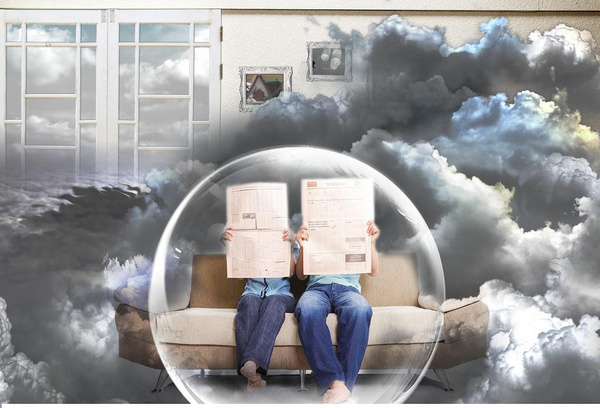Indoor pollution 11 warning signals need to pay attention
Indoor pollution has been recognized by more and more people. If there are several or even one of the following situations, the indoor environment should be quickly tested and corresponding measures taken to correct it. Otherwise, it will cause more serious health damage. If you have the following 11 situations in your home, it may be time to look at your home's indoor pollution problems.

11 kinds of warning signals need to pay attention
1. When you get up early in the morning, you feel nauseous, dizzy, and have long-term mental and loss of appetite.
2. Family members often catch a cold.
3. Do not smoke but often feel uncomfortable throat, poor breathing.
4. The child often coughs and his immune system declines.
5. Family members have skin irritations.
6. There is a common disease in the family, and the symptoms are obviously improved after leaving home.
7. Newly-married couples are infertile for long periods of time and cannot find out why.
8. Normal pregnancy in pregnant women, babies are deformed.
9. Newly built houses or plants in newly renovated houses are not easy to survive.
10. Domestic pets died somehow.
11. The newly renovated room has a pungent odor and will not be scattered for a long time.

What are the indoor air pollution sources?
I. Decoration of formaldehyde, benzene and other volatile organic compounds (TVOC) pollution
TVOC can cause the imbalance of the body's immunity, affecting the function of the central nervous system and digestive system. Light skin allergies, sore throat, headache, dizziness, chest tightness, fatigue, loss of appetite, nausea and other symptoms. Severe cases can cause bronchitis, allergic asthma, pneumonia, and pulmonary edema. Severe damage to the liver and hematopoietic system functions.
Decoration pollution is regarded as a unique and particularly serious type of pollution in China. Its main pollutant is called volatile organic matter (TVOC). People are familiar with the indoor air pollution caused by harmful gases, such as formaldehyde, benzene and toluene, xylene, etc. also belong to the TVOC category.
The indoor TVOC is mainly emitted from building materials, interior decoration materials, and living and office supplies. Such as building materials in the wood-based panels, foam insulation materials plastic sheet; interior decoration materials in the paint, adhesives, wallpaper, carpets. Organizations such as the World Health Organization (WHO) and the National Academy of Sciences/National Research Council (NAS/NRC) have always emphasized that TVOC is an important class of air pollutants.
Second, Legionella and other bacteria, fungi and dust mites and other microorganisms
Due to the relatively closed indoor environment, the large-scale use of air conditioners, and the increase in indoor chemical pollution, it is easy to breed various bacteria, fungi, and microorganisms.
1, bacteria and viruses
Under normal circumstances, the main indoor bacteria and viruses are Legionella, measles virus and so on. These bacteria and viruses can spread on the dust in the air. Through activities such as speaking, coughing, and sneezing, people can spray pathogenic microorganisms from the mouth, throat, and lungs into the air and spread it to others. For example, colds or influenza are usually spread from person to person through the suspension of body fluids.
2, fungi
In general, most fungi can cause allergic and asthmatic reactions if exposed to prolonged contact; some toxin-containing fungi cause "sick building syndrome"; when the fungus grows in large numbers, volatile organic compounds are produced, usually with a pronounced mildew odor. .
The most common cause of indoor fungus breeding is the lack of adequately insulated ventilation ducts, water damage to the carpet, and insufficient building seals to accumulate water on the building surface.
3, dust mites
Dust mite is a strong allergen to the human body and can induce a variety of allergic diseases such as allergic asthma, allergic rhinitis, bronchitis and allergic dermatitis. These substances are inhaled into the lungs as people's health activities (such as laying on beds) fly into the air, and allergic people will produce specific allergic antibodies under the stimulation of these allergens.
Dust mite is prevalent in the environment in which people live and work, especially in the warm and humid coastal regions.
Dust mites in the home are mainly born in the bedrooms, and are found in carpets, sofas, bedding, pillows, and clothes that are not often washed. In addition, the air conditioner is also a good place to live.

Third, cooking fumes and secondhand smoke
Kitchen smoke produced by China's unique cooking methods and indoor smoking can cause indoor pollution. During the cooking process, a large amount of harmful substances are generated due to thermal decomposition; 0.6-3.6 mg of nicotine is produced per cigarette, and tar contains a large amount of carcinogenic substances. In fact, smoking indoors can cause the PM2.5 value to surge by more than 10 times.
Smoking indoors can cause serious indoor air pollution. They exist in the air in the gaseous state and in the aerosol state, and the main components of the aerosol state substances are tar and nicotine (nicotine).
Fourth, plant pollen and other allergens
The main symptoms of pollen allergy are sneezing, tears, itching of the nose and eyes, and severe cases can also induce bronchitis, bronchial asthma, and pulmonary heart disease (multiple in summer and autumn).
Many families plant flowers indoors to absorb harmful substances to purify the air, but the planting of flowers and plants also inevitably brings the problem of pollen allergy. When pollen drifts in the air, it can easily be sucked into the respiratory tract. People who have a history of pollen allergies will have an allergic reaction after inhaling pollen. This is pollen allergy.
Editor's Note: To prevent indoor air pollution in the home improvement process, we must first control it from the source. The use of pollution-free decoration materials that comply with national standards is an effective measure to reduce indoor toxic and harmful gases. The green plants used to decorate the living room environment are a tool for purifying indoor air. For example, ivy and cycad can absorb benzene and organic matter. Indoor plants such as spider plants and aloes can absorb formaldehyde. Pay attention to ventilation, the higher the indoor and outdoor air exchange rate, the better the effect of reducing indoor pollutants.
Entrance decoration restaurant decoration interior decoration house decoration house
Mini Ball Lens
Spherical ball lenses are commonly used for laser collimating and focusing, laser-to-fiber coupling, fiber-to-fiber coupling, and fiber-to-detector coupling. Larger spheres are easier to handle and ease the sensitivity of translational alignment. However, smaller spheres fit into smaller packages. The addition of a broadband MgF2 antireflection coating results in a highly efficient lens due to the high refractive index of the glass. Coupling efficiency is generally >90% due to the simplicity of these lenses.
We consistently offer various high quality optical components according to the customer's requirements. Such as prisms,Spherical Lens, aspherial lens,Ball lens,Optical Windows,Achromatic Lens,Cylindrical Lens,beamsplitters,mirrors,color filters,diffraction grating,reflectors,waveplates etc.
Specification of our ball lens:
*Material:BK7 or other optical glasses
*Diameter:1mm - 40mm
*Dimension Tolerance:+/-0.005mm
*Surface Quality:40-20
*Sphericity:0.005mm
*Coating:optional
Fused Silica Ball Lens,Optical Glass Spheres,Mini Ball Lens,Half Ball Lens,Bk7 Balls,Optical Glass Balls
China Star Optics Technology Co.,Ltd. , https://www.csoptlens.com
